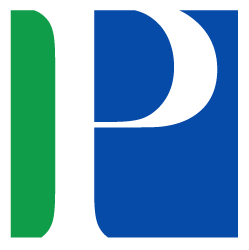Using Hands-on Experiences Including Various Forms of ARTS to Increase Ninth-Grade Female Students’ Interest in STEM
Abstract
Aim: The research aims to increase interest and a greater awareness of STEM fields among female minority students by providing hands-on STEM-infused workshops incorporating the arts as a central theme.
Methodology: The research methodology involved conducting workshops for thirty-seven female students, primarily from low socioeconomic backgrounds, who attended fifteen-hour-long STEM-infused hands-on workshops presented by university professors in the College of Education and the College of Arts and Sciences.
Findings: The study’s results revealed that the 15-week STEM workshops positively impacted the female students’ attitudes toward STEM. In addition, the post-survey results showed a significant increase in their interest in Science, Technology, Engineering, and Mathematics. The data from the results is a promising finding, as it indicates that targeted interventions can effectively increase STEM interest among young female students from underrepresented backgrounds.
Implications/Novel Contribution: The implications of this research are significant as it addresses the underrepresentation of female minority students in STEM. In addition, the project enabled students to participate in STEM education inclusively and innovatively. Our aspiration is that through this initiative, students will be able to contribute to promoting diversity and inclusivity within the STEM fields. In addition, the results of this research may provide insights into practical strategies for increasing diversity and inclusivity in STEM fields.
References
Brouillette, L. (2019). Arts integration in diverse K-5 classrooms: Cultivating literacy skills and conceptual understanding. New York, NY: Teachers College Press.
Burgess, S., Hauberg, D. S., Rangvid, B. S., & Sievertsen, H. H. (2022). The importance of external assessments: High school math and gender gaps in STEM degrees. Economics of Education Review, 88, 102267. doi:https://doi.org/10.1016/j.econedurev.2022.102267
Education Commission of the States. (2020). Key issues. Retrieved from https://bit.ly/3MrbBXi
Faber, M., Unfried, A., Wiebe, E. N., Corn, J., Townsend, L. W., & Collins, T. L. (2013). Student attitudes toward STEM: The development of upper elementary school and middle/high school student surveys. In 2013 ASEE Annual Conference & Exposition, Atlanta, Georgia.
Friday Institute for Educational Innovation. (2012). Middle and high school student attitudes toward STEM survey. Raleigh, NC: Friday Institute for Educational Innovation.
Fry, K., & Funk. (2021). STEM jobs see uneven progress in increasing gender, racial and ethnic diversity. Retrieved from https://pewrsr.ch/3MoK4Wz
Hawkins, B. D. (2015). Bias and stereotypes sideline girls in STEM. Retrieved from https://bit.ly/3pG2bOQ
Kharabi Masouleh, A. (2020). Analysis of knowledge: The epistemic theories in view of avicenna and mulla sadra. International Journal of Humanities, Arts and Social Sciences, 6(4), 171–176. doi:https://doi.org/10.20469/ijhss.6.20004-4
Langdon, D., McKittrick, G., Beede, D., Khan, B., & Doms, M. (2011). STEM: Good jobs now and for the future. Retrieved from https://bit.ly/3O8pMBM
Mazhar, F., Jam, F. A., & Anwar, F. (2012). Consumer trust in e-commerce: A study of consumer perceptions in Pakistan. African Journal of Business Management, 6(7), 2516-2528. doi:https://doi.org/10.5897/AJBM11.080
McCreedy, D., & Dierking, L. (2013). Cascading influences: Long-term impacts of informal STEM experiences for girls. Retrieved from https://bit.ly/42WjIAB
Murphy, T. (2011). STEM education - it’s elementary. Retrieved from https://bit.ly/3MrlB2F
National Education Association. (2016). STEM 101: Intro to tomorrow’s jobs. Retrieved from https://bit.ly/3M5Wp0p
National Science and Technology Council. (2018). Charting a course for success: America’s strategy for STEM education. Retrieved from https://bit.ly/2KUzHIt
National Science Board. (2016). Science and engineering indicators 2016. National Science Foundation.
Palm Beach County Schools. (2020). Choice programs: innovate your world. Retrieved from https://bit.ly/3pDQyYO
United States Census Bureau. (2019). Quick facts. Retrieved from https://bit.ly/3W1wpba
U.S. Department of Education. (2015). The nation’s report card: 2015 mathematics and reading assessments. Retrieved from https://bit.ly/44YvVXj

This work is licensed under a Creative Commons Attribution-NonCommercial 4.0 International License.











.png)









